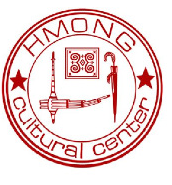
Thomas Yonash
Mai Zong Vue is executive director and founder of the Hmong Language and Cultural Enrichment Program.
Since arriving in Wisconsin in 1980 as a Hmong refugee, I have been engaged in social justice for Hmong people and refugee communities. My passion for helping others started as a teenager, when I entered high school and knew no English. I was the target of racist remarks and tried my best to minimize the cultural clashes. My father was recruited to fight in the “Secret War” in Laos, funded by the CIA, and we became refugees when the Communists took over Laos. I was born during the Vietnam War and spent five years in a refugee camp in Thailand—without peace or justice. In my adopted American homeland, I have learned to tolerate prejudice and help advocate for others like me in hopes of creating change. I did not anticipate that history would repeat itself for the American-born children of Hmong refugees.
For more than 20 years, I was involved in a variety of community development projects in Wisconsin and nationally. After starting a family and eventually scaling back on my national work, I devoted my effort toward cultural identity and educational development among Hmong children. This became a passion of mine, especially after watching my son during his year in kindergarten go from a proud, confident little boy to resenting his Hmong culture. I realized that prejudice—even if unintentional—can be as vast as the Great Wall. I met with other Hmong mothers with school-age children and learned that these moms had similar experiences. We agreed something should be done.
When the Madison Metropolitan School District released its 2012 data report on Hmong students, the results were alarming. Many of us asked: What kind of future will our children have if 93 percent of Hmong students cannot read at their grade level and 74 percent cannot do math at their grade level?
My husband and I called a community meeting in mid-March of 2013 to discuss our concerns about the MMSD report. About 50 parents, elders and children met and identified key barriers to our students’ academic success. Soon after this meeting, the Hmong Language and Cultural Enrichment Program was born. By June of that year, HLCEP offered the first summer program in the state for Hmong students through a six-week, Monday-through-Friday cultural-immersion program. HLCEP served 31 students with the help of three paid teachers, a program coordinator and volunteer efforts by Hmong parents and college students. This year we have nearly 40 students, seven paid staff members and 14 volunteers.
Looking back, I am so amazed at our community’s collaborative effort. It is the first and only program using linguistics and cultural learning as a way to provide academic support to Hmong students in Madison. The goals are not only to increase students’ knowledge of their language, culture and history but also to increase their self-esteem, pride and self-confidence—thereby positively affecting academic performance. Research shows that students who are conversant in their native language score higher in academia.
The program has many positive impacts, such as the students’ increased competitiveness and confidence through educational interactive games and class presentations. The differences between the students in the first week and in the last week are night and day.
It was clear to us that we needed to expand HLCEP to the school year. For the first time we are offering the language and culture program on selected weekends during the 2016-2017 school year. The most critical reasons are to foster a safe community environment, reinforce the language and cultural knowledge gained over the summer and strengthen student academic skills.
HLCEP is one avenue to help students. But they need additional support, and statistics by MMSD prove that point. Of the 841 Hmong students in Madison public schools in the 2014-15 school year, 80 percent
received free or reduced-price lunches, 91 percent were English-language learners and 11 percent were considered special-education students. During the past four years, Hmong students have the highest attendance rate of their peers, including higher attendance rates than white students. However, Measures of Academic Progress scores, known as MAP scores, showed that 85 percent of Hmong students read below grade level and 69 percent of Hmong students performed below grade level in math. Currently, MMSD has only one certified teacher who is bilingual in Hmong for the entire district. There is no district-wide program designed specifically to address Hmong student academic achievement.
The Hmong Education Council and others in the Hmong community believe that having just one bilingual Hmong teacher in Madison public schools and no culturally relevant programs for Hmong students are root contributors to the low MAP scores. While groups like Centro Hispano provide services to their respective communities, the Hmong community has no such direct service organization. With limited or no funding from the larger Madison community for programs to address Hmong
assimilation and self-sufficiency, Hmong community members feel isolated and students and parents can feel disconnected from the schools.
Let’s look at ways we can help close the achievement gap for Hmong students in Madison. A good step would be to mandate classes on Hmong history and culture in public schools. A bill was considered last year (as previously) in the state Legislature but did not pass. Students statewide would benefit from learning about Hmong history, especially why Hmong people became refugees and resettled in countries like the U.S.
If Madison wants to have a strong workforce and bright future, it needs to ensure that all students receive a substantive education. When leaders at all levels—in the public and private sectors—have a desire to be just and fair to all children, the solutions will come. Children will thrive. My hope for Hmong children is that they will have opportunities to improve their academic skills through culturally relevant teaching. For now, they can find it through HLCEP.
- Copyright 2016 by Madison Magazine. All rights reserved. This material may not be published, broadcast, rewritten or redistributed.





